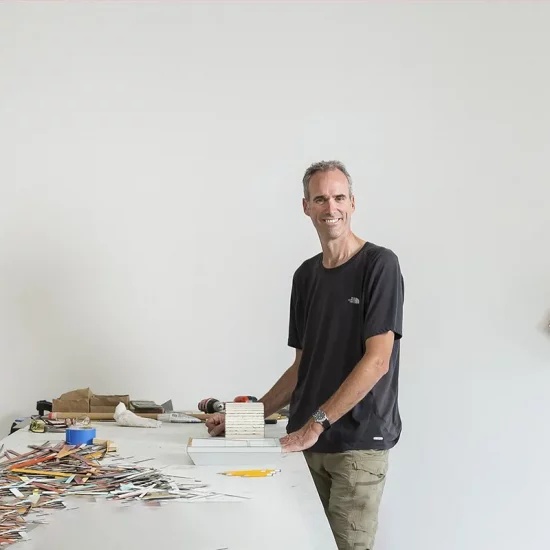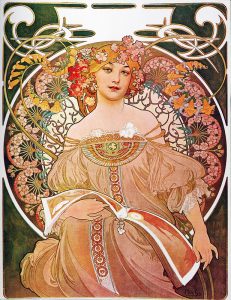The Formative Years
From the rural landscapes of South Haven, Michigan, to the artistic quarters of Santa Fe, New Mexico, Ted Larsen‘s early life laid a foundational narrative of creativity and discovery. As a young boy, the artist was drawn to the shapes and forms of discarded tools and tractor parts scattered across his family property. These early interactions with forgotten objects hinted at his future fascination with salvaged materials. Moving to Santa Fe at the tender age of fifteen marked a significant transition, not only in his environment but also in his exposure to a rich cultural and artistic heritage. Here, he completed his high school education at Santa Fe Preparatory School, subsequently earning a Bachelor of Arts from Northern Arizona University in Flagstaff. This educational journey was crucial in shaping Larsen’s artistic philosophies and methodologies.
In those formative years, Larsen’s artistic inclinations were unmistakably evident. He spent countless hours exploring abandoned airplanes at a nearby airport, a pastime that no doubt fueled his imagination and penchant for transforming the mundane into the magnificent. His move from Michigan to the vibrant artistic community of Santa Fe was a catalyst for this transformation, providing him with new landscapes and materials that would later define his artistic output. The transition from a landscape intrigued by mechanical remnants to a city teeming with artistic potential marked a pivotal chapter in Larsen’s life, setting the stage for his evolution from a landscape painter to a sculptor of minimalistic intrigue.
Ted Larsen: The Shift to Sculpture
Ted Larsen’s early career was marked by notable success as a landscape painter, his work frequently adorned with iconic imagery of barns, captured in vivid detail. By the age of 22, he had already showcased his art at the prestigious Philadelphia Museum of Art. However, the tragic events of September 11, 2001, prompted a profound reevaluation of his artistic pursuits. Disenchanted with traditional painting, Larsen began experimenting with metal scraps, crafting intricate sculptures built around substructures of birch laminate. This marked the beginning of his journey into sculpture, driven by a quest for materials that resonated with his evolving artistic vision. Larsen’s methodical search for the perfect palette of colors in salvage yards illustrates his transition from a painter’s canvas to the tangible textures of repurposed materials.
The shift from landscape painting to sculptural forms did not signify an abandonment of Larsen’s deep-seated interest in color and form but rather a recontextualization of these elements within three-dimensional spaces. His sculptures, often created from the reclaimed metal of old cars, carry the echoes of his earlier thematic explorations. Yet, they stand out for their bold experimentation with form and the physicality of the materials. The layered complexities of Larsen’s sculptures reflect a matured aesthetic that challenges and expands the boundaries of minimalism. This artistic evolution underscores a broader narrative of transformation and redefinition, where each piece serves not only as a visual exploration of form and color but also as a commentary on the possibilities of high art crafted from the lowly discarded.
Philosophy and Process
Ted Larsen’s approach to art is deeply rooted in a philosophy that eschews the prescriptive in favor of exploration and question. He views his studio as a laboratory, a place for active investigation and discovery, where the end results are not pre-determined but are outcomes of an ongoing process of inquiry and experimentation. Larsen’s transition from painting to sculpture was not merely a change in medium but also a fundamental shift in how he interacts with his materials and concepts. His work is a testament to the idea that art should provoke thought rather than convey a fixed message, embodying his belief in the importance of form and structure over narrative.
In his Santa Fe studio, surrounded by the arid landscapes that echo the subtle hues of his materials, Larsen engages with his art in a manner akin to a composer with his symphony. Each piece of salvaged metal, each stroke of his tool, contributes to a larger composition that is both an exploration of minimalism and a critique of it. His work invites viewers to question the relationship between object and space, between the aesthetic and the utilitarian. It is this dialogue between the elements of his sculptures that captures the essence of his philosophy—art as an open-ended question, a means to explore the intersections of texture, color, and form without the constraints of traditional narrative structures.
Ted Larsen: Community Influence and Legacy
Larsen’s influence extends beyond the confines of his studio, reaching into the communities and institutions that engage with his work. As a lecturer and mentor, he has shared his insights and experiences with a variety of audiences, from budding artists at the South Carolina Governor’s School for the Arts to seasoned architects and designers. His commitment to education and community engagement is a pivotal aspect of his career, reflecting his belief in the power of art to inspire and transform. Through lectures, workshops, and exhibitions, Larsen fosters a dialogue about the role of art in society, encouraging a deeper appreciation for the creative process and its potential to influence cultural and personal perspectives.
Moreover, Ted Larsen’s legacy is secured not only by his innovative sculptures but also by his role as a thought leader in the art community. His works are housed in significant collections and have been the subject of numerous scholarly articles and discussions. These achievements underscore his impact on contemporary art, particularly in the realm of minimalist sculpture. As he continues to push the boundaries of his medium, Larsen remains a pivotal figure in the art world, his career a continual journey of exploration and discovery that challenges and expands our understanding of what art can be and do in the modern age.




